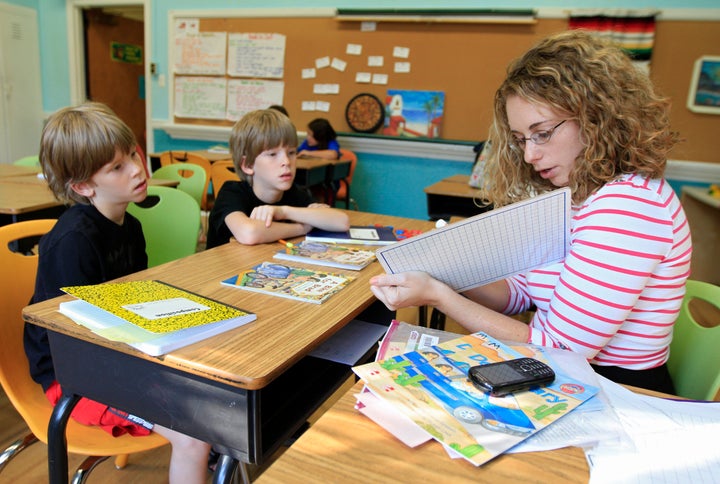
The ultimate test of an educational system is whether it makes sure that every student, whatever their background, is exposed to the content they need to compete in today's society. U.S. schools are failing this most basic test, and in the process wasting the talents of millions of American children -- children from all backgrounds. The reality is that, for most students, the education they receive is largely based on chance, making academic opportunities into a kind of lottery -- one with profound consequences.
A central challenge in improving America's education system is to guarantee equal opportunity to learn the essential content, skills, problem solving, and reasoning abilities. Reformers on both the left and right have been consumed with equalizing resources, but they too often miss the core of schooling: the instruction of academic content by teachers to students. And it is precisely in the area of the coverage of instructional content that we find large inequalities, especially in mathematics and science -- key subjects for future job opportunities and U.S. economic growth.
I don't have the space here to delve into great detail; the full story can be found in my new book Inequality for All, written with Curtis McKnight. What I'd like to do here is highlight a few key points related to the extent and origins of inequalities in mathematics content coverage.
It should come as no surprise that inequality in opportunity to learn is related to the lower achievement of underprivileged students. Students in high-poverty districts are often exposed to less rigorous content. In fact, weak math instruction is so common in struggling districts that their instructional content has more in common with low-income districts in different states than they do with more affluent districts in the same state.
One of the reasons I wrote this blog -- and why we wrote our book -- was to dispel the myth that inequality in opportunity to learn is just a problem for poor and minority students. In fact the greatest variation in learning opportunities is among middle-income school districts. Parents can't assume that just because they live in a middle-class community that their child is getting an equal chance to learn important mathematics topics to the needed depth and in a coherent and focused way.
Unequal opportunity to learn is a threat to every student because it is the difference among classrooms that is the biggest source of variation. More than what state, district, or even school a student attends, their classroom assignment determines what math topics they have a chance to learn. Classes vary greatly in what topics are taught, for how long, with what rigor, and in what order. For example, students in different "algebra" classes could focus on basic arithmetic topics or cover more advanced mathematics, experiencing dramatically different learning opportunities despite sharing the same course title -- even at the same school!
What many don't realize is how widespread the practice of tracking, where students at the same grade are taught different mathematics content, really is. Students placed in classrooms with lower level topic coverage see their chances to move on and take more advanced courses in high school and college severely limited -- once placed in a lower track, it is very unlikely that they will ever catch up. This can also have longer term consequences. National statistics indicate that in eighth grade three-quarters of students are tracked in one way or another, as are roughly a third of fourth-graders. I challenge anyone to justify influencing a child's chances in life based on how well they are doing when they are only ten-years-old.
Before anyone rushes to conclusions, just because classrooms are where a lot of inequality originates, it does not mean that we should blame teachers. Too many teachers are inadequately prepared to teach mathematics, and are forced to pick and choose what to teach from the conflicting guidance of textbooks, state and district standards, and assessments. Too many mathematics textbooks give shallow coverage to too many topics rather than focusing on a few key topics at each grade, as is done in higher-achieving countries.
Despite the tremendous challenge of ensuring equal opportunity to learn matematics, I believe there is reason for optimism. The new Common Core State Standards in Mathematics, for example, presents an excellent chance for implementing high-quality standards. The Common Core represents a chance to reform the fragmented, incoherent U.S. math curriculum that makes mathematics education a product of blind chance, and to move toward a system that really does provide every child with an equal chance at an education. The American dream has always rested on the assumption that schooling provides the level playing field by which this is possible. The data presented in Inequality For All calls this assumption into question.